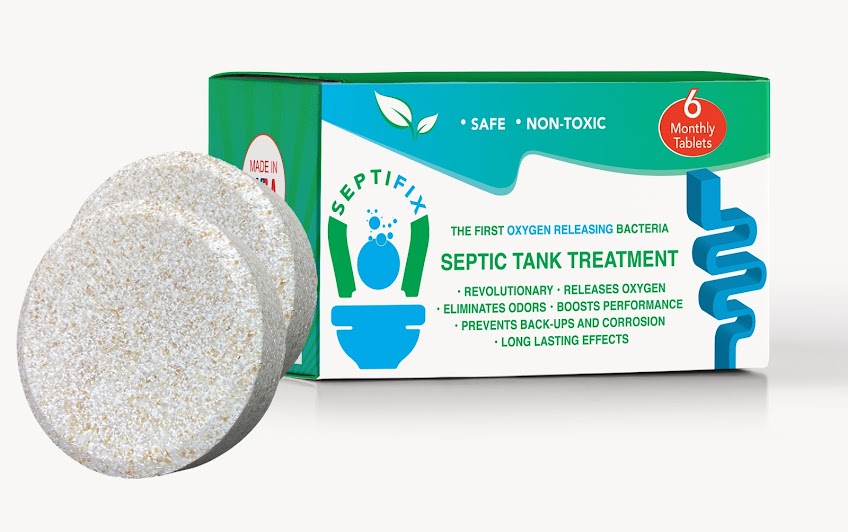What to put in a septic tank to break down solids
Septic tanks are much cheaper to install and maintain than extensive sewer lines. Plus, you will not have to pay any monthly charges. Where septic tanks get expensive is when septic problems occur, like overflowing or blocked drain field. Septic problems occur when a system is unable to properly break down solids, grease, and sludge. But things do not have to be these ways, because taking care of your septic system is easy and inexpensive.
So, what to put in a septic tank to break down solids? SeptiFix tablets are a good choice for breaking down solids in your septic tank. Other options include active yeast, rotten tomatoes, hydrogen peroxide, and inorganic acids, among others.
Continue reading to find out what to put in your septic tank to break down solid waste matter.
Call Septic Service Pros 1.855-925-0760 For Service or Request a Quote
How Can You Take Care of Your Septic System?
Septic tank needs regular maintenance and inspections. That said, simple steps can also go a long way to keep it in top shape and prolong its life. Before we look at what you can do keep your septic tank healthy and functional, let us understand how it works.
Your septic tank contains naturally occurring bacteria, which dissolve and consume the solid waste that enters the tank. Think of these bacteria as your septic system’s buddy — without them the solid waste will not get broken down.
Once the good bacteria have digested the solid waste, the wastewater in the tank drains out via small holes present in its pipes into the drain field.
If you are having septic problems, the first thing you should do is schedule a thorough septic inspection. Having your system inspected by experts will help you receive a comprehensive health report of your septic tank.
Call Septic Service Pros 1.855-925-0760 For Service or Request a Quote
It is also important that you make sure that you only use products which are 100% safe for your system. So, consider using septic-safe toilet papers in place of the regular ones. These papers are not expensive, so there is no reason for not doing this little bit for your septic system. Septic-safe toilet paper is easy to break down, which makes the job of good bacteria in the septic tank somewhat easier.
Also, make sure you do not flush inorganic materials into your septic tank. Only human waste and toilet paper should be flushed. If you flush diapers, fatty substances, and feminine hygiene products, a septic backup is only a question of when — and not if.
Last but not the least, be mindful of flushing antibacterial products. That is because they can kill good bacteria and significantly disrupt the balance of bacteria in the septic tank.
Now that we have seen how you can take good care of your septic system, let us look at things you can use to break down solids in the tank.
How to break down solids in your septic tank?
Here are a few things you can put in your septic system to break down the solid waste matter inside it.
- SeptiFix Tablets
Flushable, environmentally-safe, and easy-to-use, SeptiFix tablets release oxygen into a septic tank. To use SeptiFix tablets, you do not need to open your tank’s lid. Simply flush these tablets into the toilet once every month, and they will do the rest.
Upon entering the septic tank, the tablets dissolve slowly and release oxygen and sodium carbonate. Every table releases up to 10 liters of oxygen. While oxygen promotes the growth of good bacteria to ensure the solid waste gets broken down nicely, sodium carbonate helps keep the pH levels to neutral.
Active Yeast
Add half a cup of active dry yeast to the toilet bowl and flush it down the toilet. To ensure the yeast sits nicely in the pipes, avoid taking a shower or running the dishwasher immediately after flushing the dry yeast. Yeast helps promote the good bacteria and enzymes, ensuring that the solid waste gets broken down efficiently.
Rotten Tomatoes
When you think of maintaining your septic system’s health, rotten tomatoes sound like an unlikely ally. But they can be of mighty help. Tomatoes have proteins known as pectinase, which can efficiently break down plant cell walls and pectin. So, flushing rotten tomatoes into the septic tank can help in the breaking down of solid waste and waste plant materials.
Hydrogen Peroxide
Another thing that you can use to help the decomposition of solid waste in your tank is to use hydrogen peroxide. Before using it, make sure it is nicely diluted. Also, keep in mind that hydrogen peroxide can harm the soil. For this reason, hydrogen peroxide is not recommended so much for breaking down solid matter in the septic tank. A much better option would be to use the things listed above.
Inorganic Acids
Inorganic acids can help clear clogs, but they can also cause damage to your septic tank. The problem with inorganic acids is that they can kill the good bacteria in your tank, which in turn can lead to bigger problems. Inorganic acids are also harmful for your pipes and can damage the septic tank’s walls.
Biological additives
Biological additives are enzymes which help in the breaking down of solids in a septic tank. Unlike inorganic acids and hydrogen peroxide, they are completely safe to use. As a matter of fact, many jurisdictions only approve these additives for use in regard to a septic tank.
Since biological additives are natural, they do not cause harm to bacteria, nor do they damage the leach field. They increase the population of bacteria in your tank and add specific enzymes to its environment. These two actions ensure solid waste is quickly decomposed and the problem of overflowing is avoided. Biological additives are easy to use. Simply flush them down your toilet and they will do the rest.










